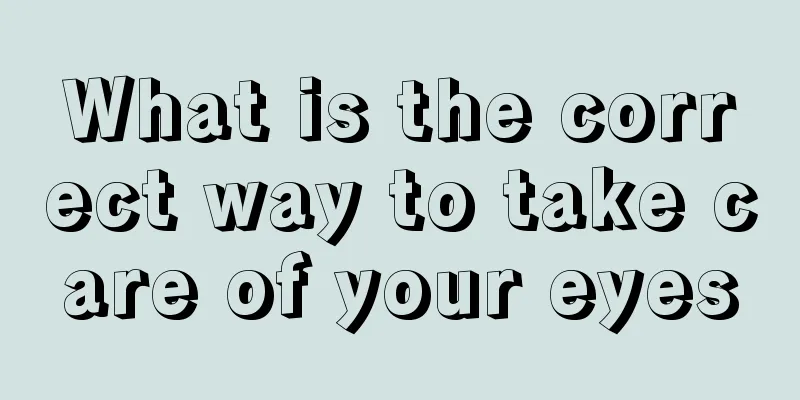What is going on when I have diarrhea and vomit?

|
Diarrhea and vomiting are what we call vomiting and diarrhea. In fact, this is most likely caused by bacterial infection. Patients usually have symptoms such as chills, fever, abdominal pain, diarrhea, nausea, and vomiting. ① Bacterial dysentery: The onset is relatively rapid, often with chills, fever, abdominal pain, diarrhea and tenesmus, which may be accompanied by nausea and vomiting. The diarrhea is characterized by mucus, pus and blood in the stool, with varying frequency per day. Under the microscope, it is found that the stool contains a large number of red blood cells and white blood cells, and stool culture can detect Shigella dysenteriae. ②Salmonella infection: often has a history of unclean food, often with symptoms of abdominal distension, abdominal pain and diarrhea. The stool is mainly loose or watery, with little pus and blood, and the number of bowel movements varies from 3 to 5 times a day. Stool culture can detect pathogenic bacteria (Salmonella or Salmonella typhi, etc.). ③Escherichia coli enteritis: often with a history of unclean diet. The onset is relatively acute, and symptoms may include chills, fever, abdominal pain, diarrhea, and may be accompanied by vomiting. Diarrhea is mostly watery stool, but may also contain mucus, pus and blood. Stool culture can detect pathogenic bacteria. ④ Campylobacter infection: The symptoms are generally mild, manifested as upper and middle abdominal pain accompanied by diarrhea, with loose or watery stools as the main manifestation, and are effectively treated with antibiotics. ⑤ Yersinia infection of the small intestine and colon: The clinical manifestations are roughly similar to Campylobacter infection, and symptoms such as diarrhea are often milder. ⑥Intestinal Staphylococcus aureus infection: The onset is relatively acute, and symptoms may include chills, fever, abdominal pain and diarrhea. Diarrhea is mainly loose stools, which may be accompanied by a small amount of mucus, pus and blood. Stool culture can confirm the diagnosis. This disease often occurs after the use of broad-spectrum antibiotics, hormones or major surgical surgery. Stool culture may reveal Staphylococcus aureus. ⑦Acute hemorrhagic necrotizing enteritis: It is now generally believed to be related to infection with Clostridium perfringens or Clostridium difficile. The onset is acute, and symptoms such as abdominal pain and diarrhea are generally severe. The abdominal pain is severe and can spread throughout the abdomen. It can be continuous pain or paroxysmal. Early diarrhea may be loose or watery stools, more than 10 times a day, and may then contain blood. In severe cases, the stool may be bloody and watery, often accompanied by symptoms such as chills, fever, nausea and vomiting. This disease is more common in adolescents. |
<<: Is it serious to have Hepatitis B virus (HBV)?
>>: What is the difference between a thorn monkey and a flat wart
Recommend
To prevent colorectal cancer, check it every few years
How often should you check to prevent colorectal ...
Sciatica, what are the common causes?
Sciatica can cause symptoms of lower back pain an...
What are the most effective ways to remove acne and acne marks?
The weather is hot in the summer, and the face is...
Can massagers in daily life help lose weight
Many of my friends have massagers at home. Massag...
How to treat severe obsessive-compulsive disorder?
Psychological problems have gradually become a ve...
Left hip pain in early pregnancy
For pregnant women, the most important concern is...
Back pain from drinking? Teach you how to do this
Many people will experience symptoms of lower bac...
How much does it cost to cure colon cancer
My wife and I are both working class. Although we...
Early signs of lymphoma in the neck
The early signs of lymphoma in the neck are mainl...
How long does it take for lung cancer to go from early stage to middle stage?
There is no fixed time period from early stage lu...
Treat lumbar disc herniation and see the folk remedies that others are using
Elderly people often feel sudden pain in the lumb...
Why is my face thin and my body fat
Many people have the problem of having a thin fac...
Five kinds of breakfast that make you stupider the more you eat
Introduction: After waking up from a night's ...
How much do you know about human papillomavirus?
Human papillomavirus is divided into four types: ...
What to do if bitten by a red fire ant
Red fire ants are small but strong animals. Once ...









